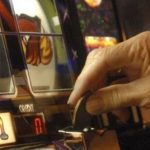 Weird Stuff
Weird Stuff  Weird Stuff
Weird Stuff  Our World
Our World 10 Ways Your Christmas Tree Is More Lit Than You Think
 Movies and TV
Movies and TV The 10 Coolest Stars to Set Sail on The Love Boat
 History
History 10 Things You Didn’t Know About the American National Anthem
 Technology
Technology Top 10 Everyday Tech Buzzwords That Hide a Darker Past
 Humans
Humans 10 Everyday Human Behaviors That Are Actually Survival Instincts
 Animals
Animals 10 Animals That Humiliated and Harmed Historical Leaders
 History
History 10 Most Influential Protests in Modern History
 Creepy
Creepy 10 More Representations of Death from Myth, Legend, and Folktale
 Technology
Technology 10 Scientific Breakthroughs of 2025 That’ll Change Everything
 Weird Stuff
Weird Stuff Ten Bizarre Facts About The Doge Meme
 Our World
Our World 10 Ways Your Christmas Tree Is More Lit Than You Think
 Movies and TV
Movies and TV The 10 Coolest Stars to Set Sail on The Love Boat
Who's Behind Listverse?

Jamie Frater
Head Editor
Jamie founded Listverse due to an insatiable desire to share fascinating, obscure, and bizarre facts. He has been a guest speaker on numerous national radio and television stations and is a five time published author.
More About Us History
History 10 Things You Didn’t Know About the American National Anthem
 Technology
Technology Top 10 Everyday Tech Buzzwords That Hide a Darker Past
 Humans
Humans 10 Everyday Human Behaviors That Are Actually Survival Instincts
 Animals
Animals 10 Animals That Humiliated and Harmed Historical Leaders
 History
History 10 Most Influential Protests in Modern History
 Creepy
Creepy 10 More Representations of Death from Myth, Legend, and Folktale
 Technology
Technology 10 Scientific Breakthroughs of 2025 That’ll Change Everything
10 Clever Ways People Have Cheated at Casinos
Gambling is a billion-dollar industry, and while casinos are in it to make money, many gamblers are hoping to strike it rich. Some players rely on skill, luck, or strategy—but others turn to cheating. Over the years, gamblers have marked cards, swapped chips, and manipulated dealers to try to get ahead. But the most creative cheaters have taken things to the next level, using technology, social engineering, and sheer nerve to outsmart casino security. Here are ten of the cleverest—and sometimes wildest—ways people have managed to cheat at casinos.
Related: Ten Celebs Who Did Hard Time after Cheating on Their Taxes
10 Roulette Laser
In the early 2000s, a trio known as the Ritz Team—two Serbian men and a Hungarian woman—walked away with more than £1 million after pulling off one of the most technologically advanced roulette scams in history. They targeted the Ritz Casino in London using a concealed laser scanner and advanced calculations to predict the likely outcome of each spin.
The scanner, hidden inside a mobile phone, measured the speed and deceleration of the roulette wheel and ball. Using a method known as “sector targeting,” they calculated the ball’s likely landing area in real time, giving them a massive edge over the house. Some reports suggest they used a miniature computer to assist with the calculations.
Over two nights, they won around £1.3 million. Suspicious casino staff launched an investigation involving detectives and surveillance experts. But because the team didn’t tamper with the equipment or physically interfere with the game, authorities found no grounds to press charges. In the end, the trio walked away with their winnings, leaving behind one of the most memorable cheating stories in modern gambling history.[1]
9 Hand Mucking
Hand mucking is a sneaky way to cheat at card games. It involves secretly palming a valuable card and swapping it in at just the right moment during play. To pull it off, a cheater must have a matching card from the casino’s deck—something that’s not easy to come by. But Ida Summers, known as the “Vegas Vixen,” made it look effortless.
Summers, a petite woman at just 5’3″ (1.6 m) and about 100 pounds (45.4 kg), was a master of deception. She used charm, sleight of hand, and possibly even theft to acquire decks of cards used in Las Vegas casinos. Once she had the right tools, she could manipulate hands of blackjack and other games to her advantage. Her skills earned her tens of thousands of dollars in just one weekend.
Eventually, casinos grew suspicious and launched an investigation, which attracted the attention of the FBI. Summers was caught and served a relatively light sentence. Despite the legal consequences, she remains one of the most notorious female cheaters in gambling history—and a legend among those who admire cunning over cards.[2]
8 RFID Blocker
Modern casinos rely on technology to keep track of chips and prevent fraud. One popular tool is RFID (radio-frequency identification) technology, which uses embedded chips to monitor betting activity and payouts. However, in 2011, a group of scammers in Singapore found a way to use that very system against the casinos.
The group exploited the RFID system using a device that blocked the RFID signal. This allowed them to use low-value chips while making it appear like they had placed high-value bets. Because the casino’s tracking system was essentially “blinded,” the gamblers were credited with large amounts they hadn’t actually risked.
This clever manipulation let them cash in on winnings far greater than what they wagered. Eventually, the scam came to light, and the group was caught and prosecuted. But the incident served as a wake-up call to the casino industry. It showed that even cutting-edge security systems can be vulnerable—and that cheaters will always look for the next technological loophole to exploit.[3]
7 False Shuffles
Sometimes the best way to cheat a casino is from the inside. That’s what the Tran Organization figured out when they orchestrated one of the largest casino scams in U.S. history using a tactic known as false shuffling.
The idea is simple but effective: a dealer pretends to shuffle the cards normally but actually keeps key portions of the deck in a known sequence. Players who are in on the scam know when these unshuffled cards are coming and can bet accordingly. It’s a subtle trick, but devastatingly effective when combined with technology.
The Tran Organization, made up of more than 40 people—many with prior experience as card dealers—bribed casino employees to perform false shuffles. They wore concealed microphones and earpieces and used computer programs to track and predict card sequences. Their operation successfully scammed over 25 casinos across the United States out of more than $7 million before being shut down in 2007.
Ultimately, 47 people were indicted, marking one of the most coordinated and complex cheating rings ever exposed.[4]
6 Bill Validator Device
Slot machines have evolved significantly since the days of coin slots and string tricks, but cheaters continue to keep pace. When old scams stopped working, criminals shifted their focus to the bill validator—the mechanism that accepts paper currency. One of the most effective scams involved tricking these machines into reading a $1 bill as if it were $100.
The trick required a small electronic device disguised as a folded dollar bill. This fake bill had two prongs that inserted into the bill validator’s contact points. Once activated, the device signaled the machine to register the input as a high-value bill, usually $100. This granted the player a significant number of free credits without actually depositing the proper amount of money.
The scam didn’t increase a player’s odds of hitting the jackpot, but it gave them far more chances to win—without paying for them. Eventually, casinos caught on and added new safeguards, but not before scammers walked away with sizable profits.
This type of fraud illustrates how cheaters continually adapt their methods to exploit new vulnerabilities in gaming machines.[5]
5 Fake Cigarette Pack
In 1973, Monique Laurent, her husband, and her brother hatched a high-tech cheating plan that earned them millions at a French casino. The scheme involved a modified roulette ball and a pack of cigarettes that was far more than it appeared.
Laurent’s brother, a croupier with an interest in radio technology, embedded a receiver inside a roulette ball. The transmitter—disguised as a cigarette pack—was used by Monique to remotely influence where the ball would land. Her husband placed bets on a specific six-number range. With a push of a button, the ball could be manipulated to land within that range with startling accuracy—about 90 percent of the time.
In just a week, the trio made roughly five million francs. Their scam was so successful it seemed almost too good to be true—and it was. Laurent’s glamorous appearance attracted attention, and soon their actions came under scrutiny. They were eventually caught and arrested.
The story became so famous that it inspired the French film “Les Tricheurs,” a fictionalized version of one of the most remarkable gambling scams ever pulled off.[6]
4 Fake Chips
Creating fake poker chips may seem like a bold move, but in 2014, one man tried—and nearly succeeded. Christian Lusardi entered the Borgata Winter Open Poker Tournament with a stash of counterfeit chips. As the tournament progressed, Lusardi secretly added the fakes to his stack, gaining an unfair advantage over other players.
By the second day, he had become the chip leader. However, officials noticed discrepancies in the total number of chips in circulation. The numbers simply didn’t add up. Realizing the walls were closing in, Lusardi tried to flush the fake chips down a toilet at Harrah’s Casino. But the chips clogged the plumbing system, prompting further investigation.
Eventually, authorities discovered the source of the plumbing problem—and the scam. They recovered over $2 million in counterfeit chips, forcing the casino to cancel the event and take a financial hit of over $450,000. Lusardi was arrested and sentenced to five years in prison. He was also ordered to pay for the damage to the plumbing system.
This stunt not only ended his poker career but also became a cautionary tale about what happens when a scheme literally goes down the drain.[7]
3 Video Poker Bug
In 2009, John Kane discovered a software glitch in a Game King video poker machine—and he used it to rake in huge jackpots. He first stumbled upon the bug by accident at a different casino, but once he realized its potential, he got to work exploiting it with the help of his friend Andre Nestor.
The glitch allowed Kane to trigger bonus payouts by manipulating the machine’s game history settings. It took perfect timing, but the trick produced consistent wins when executed correctly. Over time, Kane and Nestor walked away with over $500,000 in winnings from various Las Vegas casinos.
The scam was so subtle that it took casino officials quite a while to figure out something was wrong. Eventually, suspicions led to surveillance footage being reviewed, and the pattern became clear. Still, since neither Kane nor Nestor physically tampered with the machines or used any external devices, prosecutors dropped the charges.
Ultimately, their winnings were seized, but their names became legend in gambling circles. It was one of the few casino cheats that relied purely on observation and technical savvy.[8]
2 Hidden Camera
One of the slickest cheating methods in baccarat and blackjack involved using a hidden camera disguised in a player’s clothing—often up a sleeve. The scam works during the card-cutting phase. When a player cuts the deck, the camera captures the order of the cards beneath the cut.
An accomplice, watching the feed remotely, analyzes the sequence and relays critical information back to the player via a concealed earpiece. The player then adjusts their strategy accordingly. The technique gives a huge advantage in games where knowing the card order can influence every decision.
This high-tech trickery was used by several groups, but it gained notoriety in 2010 when Asian cheating syndicates used it to steal an estimated $100 million from casinos around the world. The scam went largely undetected until they attempted it at the Cosmopolitan Las Vegas in 2011, where they were finally caught.
Though many members were arrested, others managed to evade capture. The incident remains one of the most widespread examples of technologically enhanced casino fraud to date.[9]
1 Shoe-Based Computer
Laszlo Kovacs, a Hungarian gambler, took cheating to new heights—or perhaps new lows—when he built a computer into his shoe. In 1998, at the Star City Casino in Sydney, Australia, Kovacs used this device to win more than $200,000 at the roulette table.
The computer was connected wirelessly to an earpiece. Kovacs would tap his foot to activate the system, which measured the speed of the roulette wheel and the ball. The device quickly calculated the ball’s likely landing zone and fed predictions into his earpiece.
Casino staff eventually noticed Kovacs repeatedly tapping his foot during games, prompting them to investigate. When the ruse was discovered, Kovacs was arrested and deported—but he wasn’t forced to return his winnings. The story made international headlines and inspired debates about the legality of predictive technology in casinos.
Though casinos have since upgraded their surveillance systems, Kovacs’s shoe-based computer remains one of the most creative cheating methods ever devised—and a reminder that sometimes, beating the house requires thinking from the ground up.[10]








